Miroslav Tichý was 22 years — a student of drawing and painting at the Academy of Art in Prague — when the Soviet Union ‘annexed’ Czechoslovakia in 1948. Like many other students, Tichý was very vocal in his opposition to the new regime. The new Soviet regime required art students to create ‘Socialist’ art. Tichý refused. He was considered a dissident and for the next eight years, he was sporadically detained in various jails, detention centers and psychiatric institutions.
His frequent institutionalization, combined with bouts of alcoholism, made it impossible for Tichý to keep a job. His emotional state deteriorated; although he continues to make a few drawings and paintings, he apparently wasn’t able to maintain much enthusiasm for it. Tichý spent his days wandering around his hometown of Kyjov apparently at random, watching the local women. He soon developed a reputation as something of a Peeping Tom.
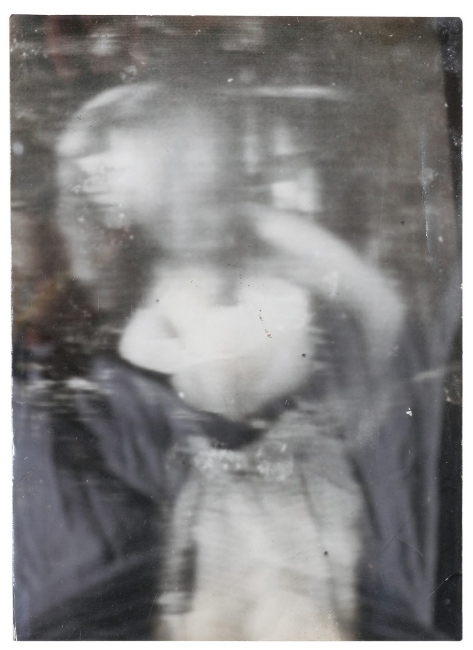
There’s no doubt there is an element of voyeurism in Tichý’s work, though it’s not clear if his voyeurism had a sexual component. He clearly took great pleasure in looking at people — mostly women, and usually without their knowledge. The women he spied on weren’t necessarily young or pretty or scantily clad; they just had to be female. At some point in the late 1960s or early 1970s Tichý, like so many other such voyeurs, turned to photography.
What’s surprising is how he did it.
Tichý may have been something of a degenerate, but he brought a certain creative genius to his degeneracy. Since he was much too poor to buy camera equipment, Miroslav Tichý hand-crafted cameras from the materials at hand. His cameras were a collection of spools, cardboard mailing tubes, cigar boxes, tin cans and lenses crafted from the eyeglasses of children. Some of his lenses were even extendable — homemade zoom lenses.
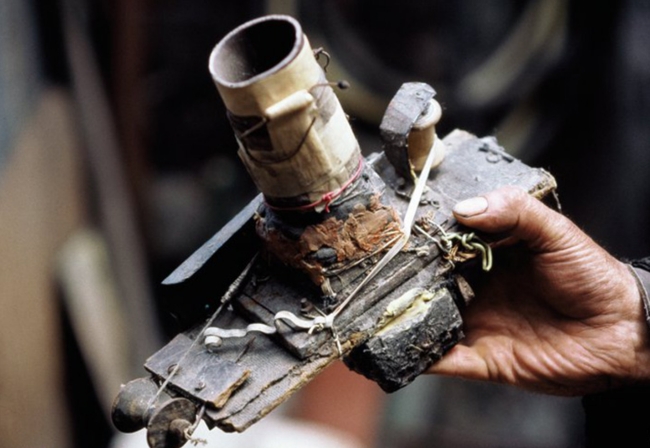
Because his homemade cameras had no viewfinders, Tichý was forced to guess about the composition of the photograph. However, since his photography was driven as much (or more) by his fetish as by artistic concerns, he wasn’t terribly concerned about aesthetics. His criteria for a successful photograph was fairly broad. Traditional elements of composition are more flexible in the world of the fetish.
Tichý’s methods of photography were those of a stereotypical voyeur. He wandered the town with his camera tucked under his long coat or a sweater. He would quickly shoot the photograph, then tuck the camera away again. He was known to conceal himself in bushes or behind objects in order to get his photographs. He photographed people everywhere — at the beach, at the market, walking on the streets, sitting on their stoops.
He was as perversely obsessive about the number of frames he shot as he was about his subjects. Tichý would never exceed more than one hundred photographs a day. If/when he reached that number, he stopped shooting. Because his cameras were home-made, they didn’t abide by the usual 35mm standards. A roll of 36 exposures might provide him with perhaps fifty shots.
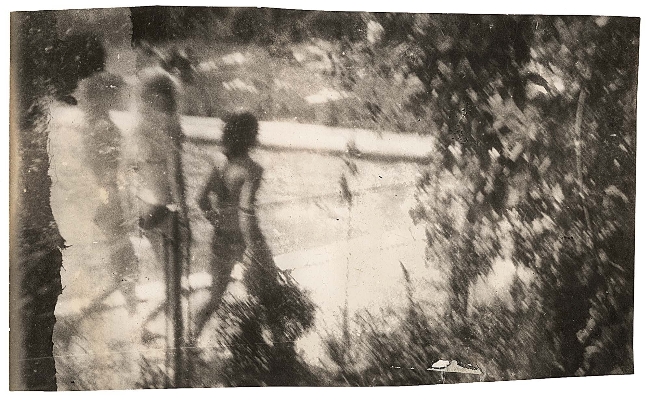
The photographs produced by these makeshift cameras are obviously primitive and unrefined. The focus is rarely sharp, the exposure varied wildly, the subject of the photograph may not even be entirely in the frame. The images are grainy, strangely cropped, torn, sometimes pasted on cardboard or cardstock, often decorated with ink or pencil.
Even more bizarre, once he’d processed the film, printed the image, and decorated it, he seemed to lose interest. Tichý took little care of the images once they were printed. The fetish seemed to be fulfilled at that point.
The images themselves are infused with a weird sort of dreaminess. The subjects of the photos are often engaged in the mundane activities, but because they were usually photographed unaware, the motions and movements are completely unstudied and natural. Because of that, these everyday situations and trivial moments are made remarkably lovely. There is something almost theatrical and poetic about young women running wildly, completely without care.
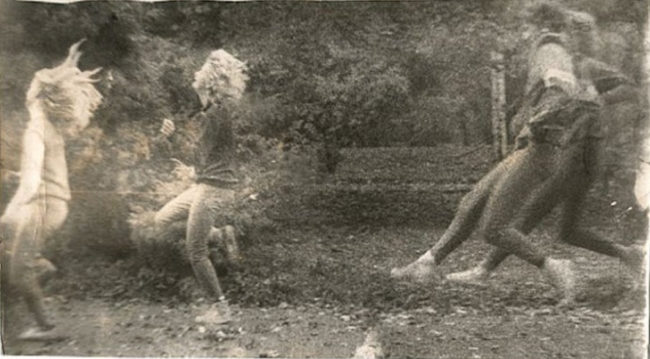
Tichý’s photography came to light by coincidence. Harry Buxbaum, one of the psychiatrists who had treated him in Prague, had also been born in Tichý’s hometown of Kyvoj. In 1981 Roman Buxbaum, the doctor’s nephew, went to Kyvoj to visit his grandmother. He noticed the old man lurking in the streets and alleyways, and learned from his grandmother of the link to his uncle. Eventually he met Tichý and began to chat with him. He became intrigued by Tichý’s home-made cameras and asked to see the photographs made by them.
It was clear Tichý never intended for these photographs to be seen by others or exhibited. In fact, it seems likely he had no intention of keeping them for himself. When Buxbaum went to look at the photographs, he found hundreds of them scattered haphazardly around the old man’s rodent-infested hut. Many were just lying on the floor; many of them were crumpled, torn, nibbled by mice, and covered with a decade or more of dust.
Buxbaum began to write articles about Tichý; he even organized an exhibit of his work. The strange old man’s photographs drew both critical praise and curiosity. His small, odd prints began to sell. Eventually Tichý’s work was exhibited in Brno, not far from his hometown. Several residents of Kyvoj came to the opening, hoping to see if they could recognize themselves in the photographs. Tichý did not attend.
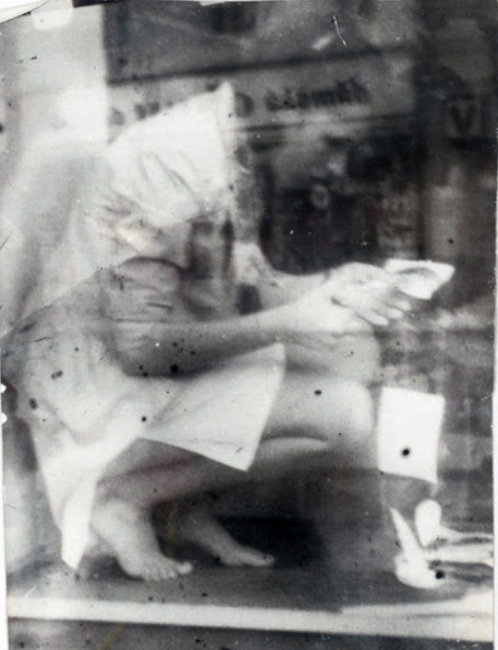
Miroslav Tichý is very old now. He still lives in Kyvoj, though he no longer takes photographs. He seems uninterested in his newfound celebrity and ignores the money he has received from it. He has called the exhibitions of his work “a waste of time” and describes the world in general as “a double big shit.” While he isn’t exactly a hermit, he apparently remains generally solitary. Some of that is undoubtedly a product of his personality, but it is likely that his aversion to bathing or changing his clothes also plays a large part.
There is no doubt that Tichý is more than merely eccentric. Is he a pervert? By most Western standards, yes. Is he a genius? By most modern standards, yes. Is he an artist? In the sense that he creates art, yes. Does it matter whether or not he intends to create art? I don’t know. I’d like to think it does matter — but I really don’t know.
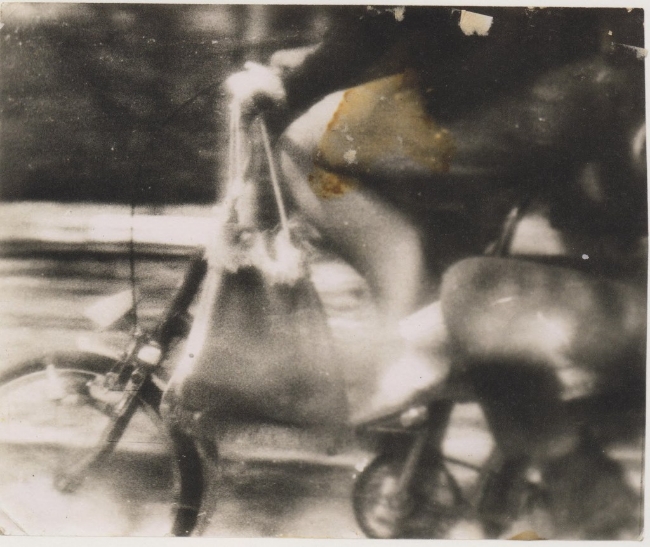
I do know this: I like the fact that Miroslav Tichý exists. I’m sure he would be happier if he was better adjusted — but I’m glad there are maladjusted people out there making interesting art. I’m sure he would be healthier if he drank less and bathed more — but I’m glad there are people who completely ignore what is good for them. I’m sure he would be a more productive artist if he wasn’t quite so wrapped up in his fetish — but I’m glad there are people whose priorities are so wildly divergent from mine that I can’t understand them.
It’s very selfish of me, but there it is. I’m glad the world contains people like Miroslav Tichý.
